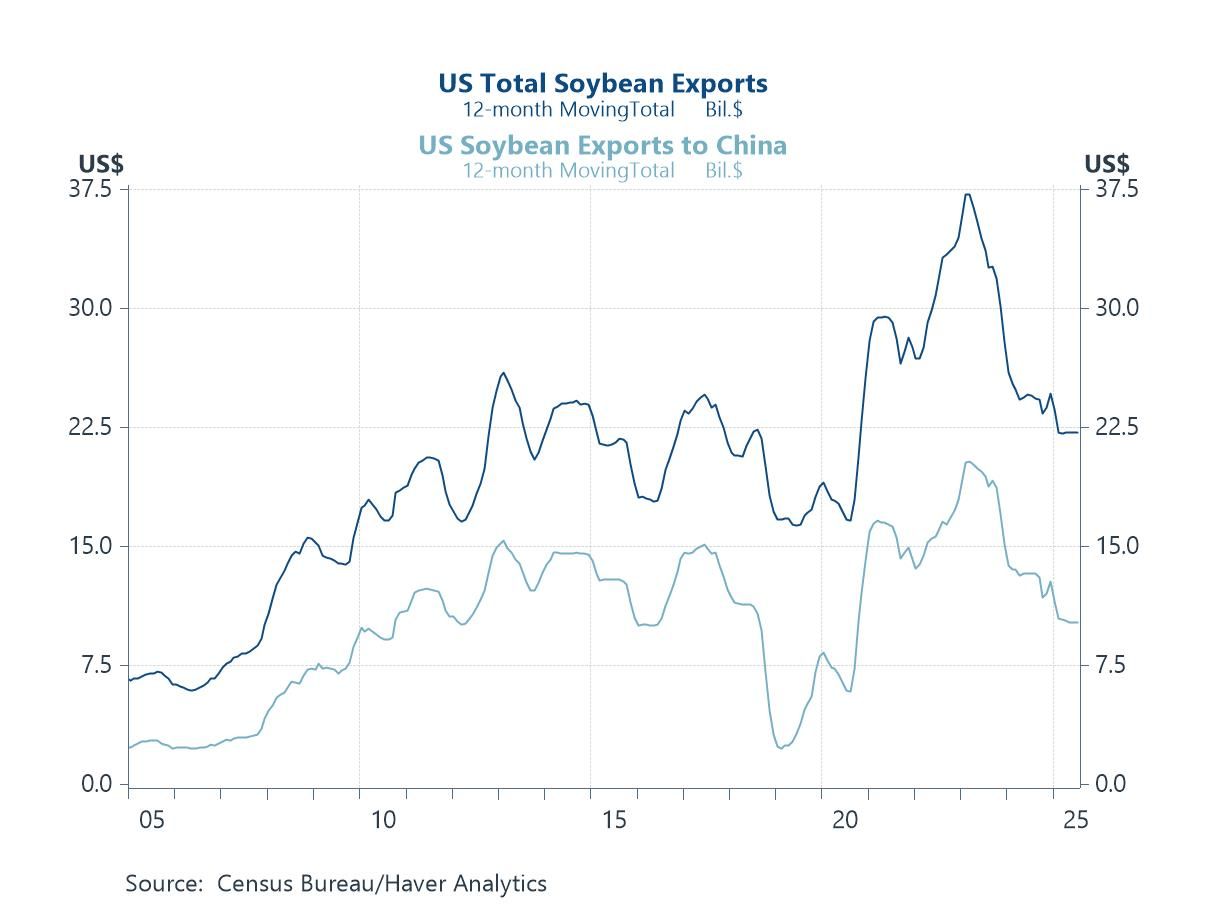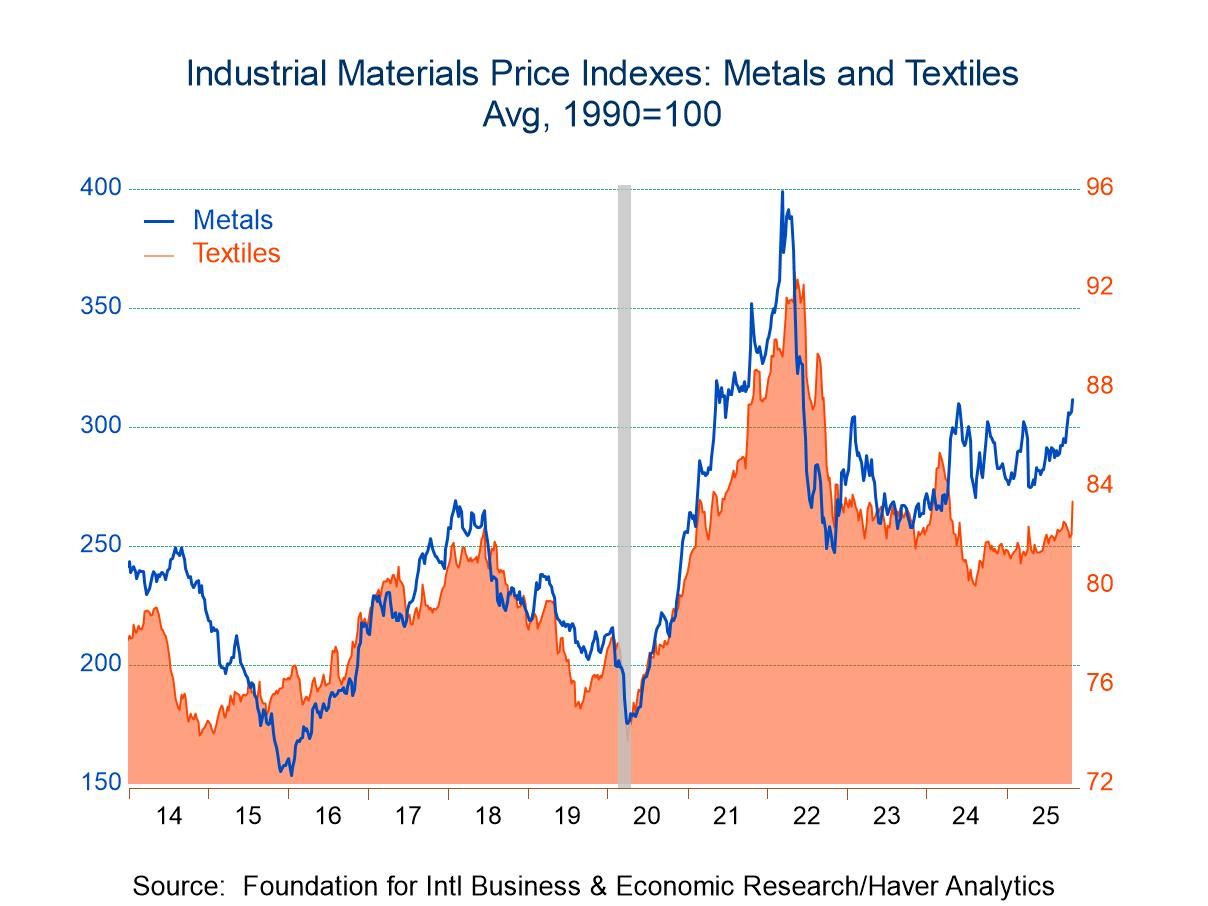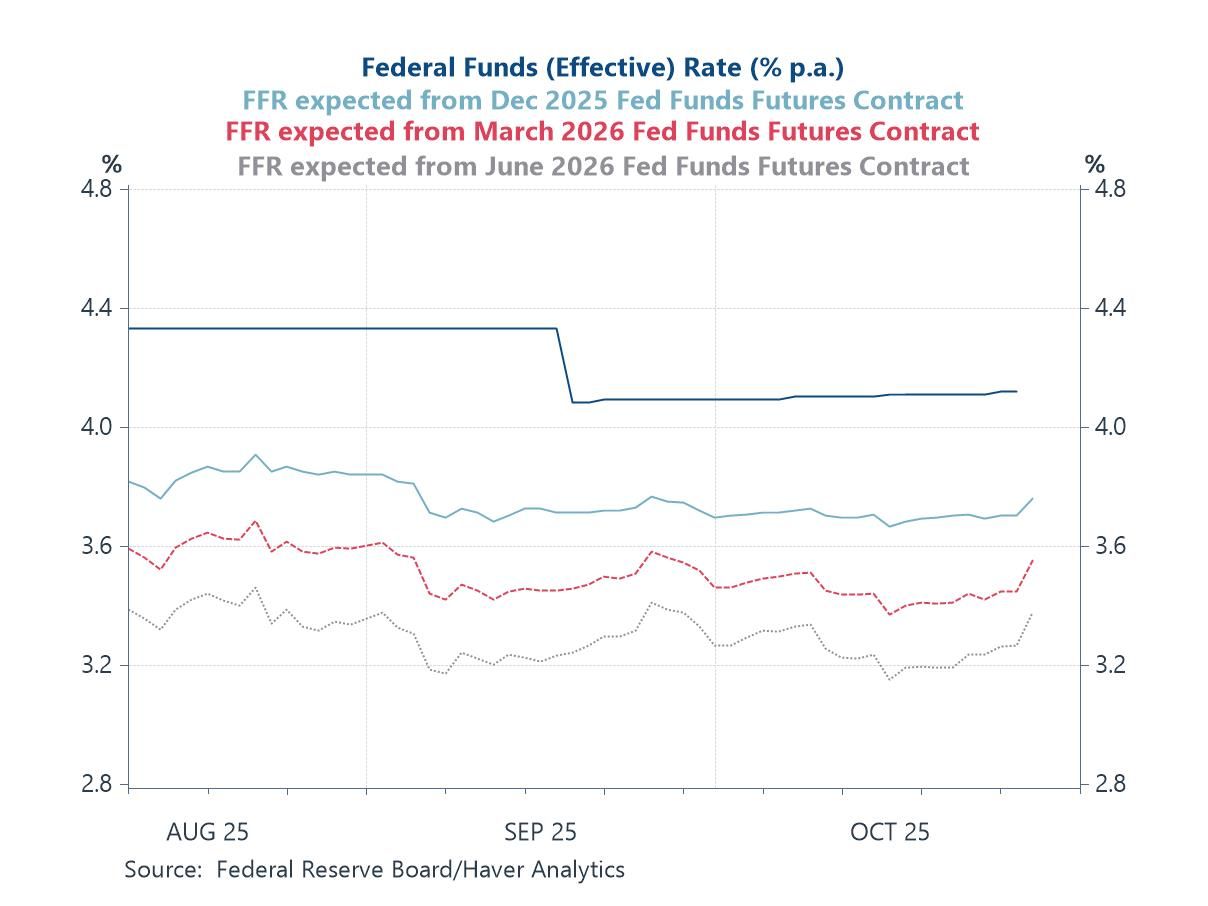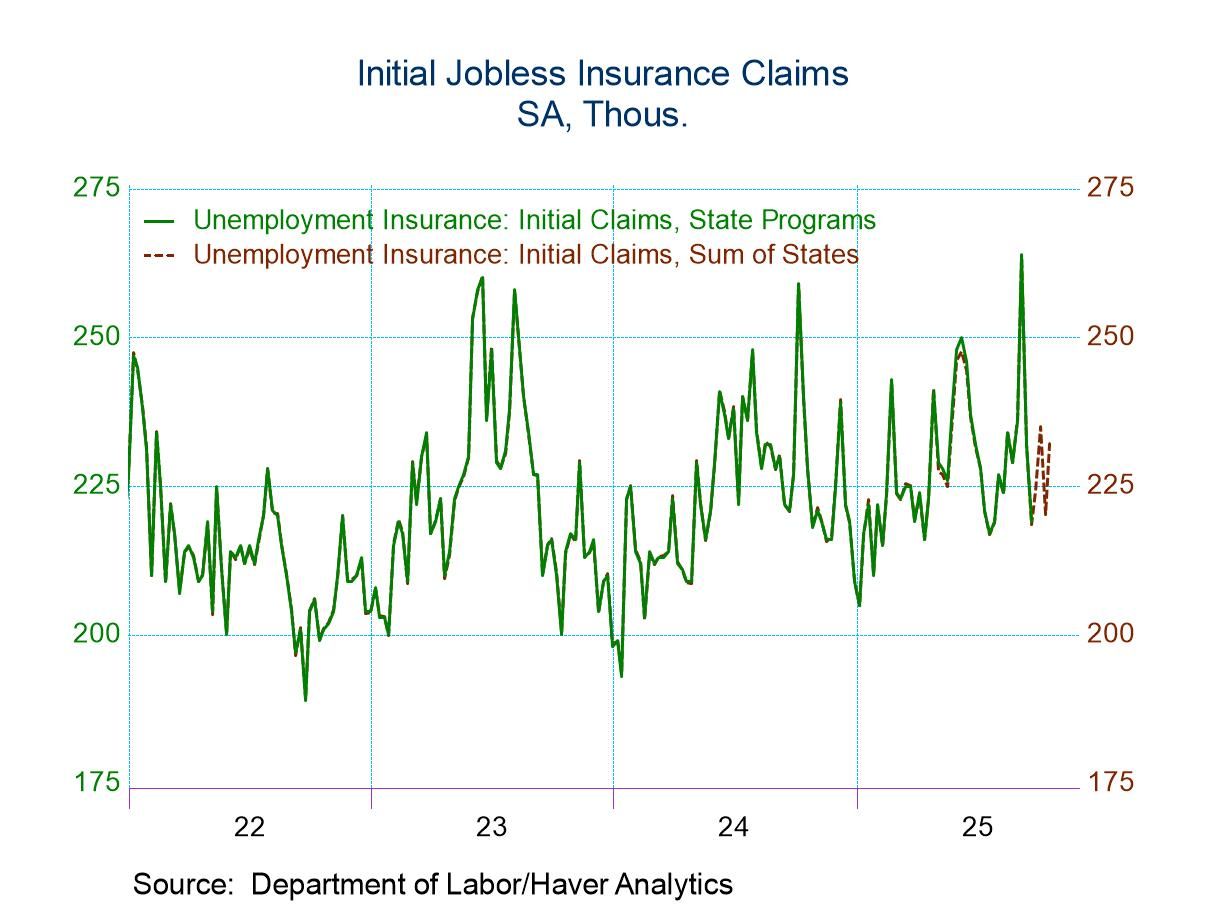 Global| Jan 28 2008
Global| Jan 28 2008Money Growth
Summary
On the face of it money supply growth should not give us much cause to fear recession. The US and UK show slowdowns in high frequency growth rates of money supply but only the US three-month rate is a negative one; and three-month [...]
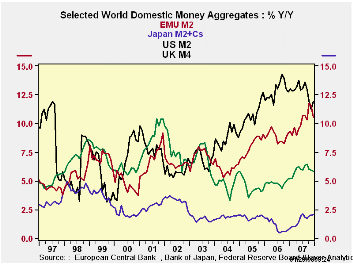
On the face of it money supply growth should not give us much
cause to fear recession. The US and UK show slowdowns in high frequency
growth rates of money supply but only the US three-month rate is a
negative one; and three-month growth rates are often more volatile than
indicative. Japan’s pace of money growth is mostly steady at a low
rate. Money growth rates do not seem to be a place to find a reason to
fear an economic recession either in the US or in Europe.
The Euro area. The Euro area is posting huge growth
rates in money and key credit aggregates; those growth rates remain
bloated even when deflated by the headline HICP. EMU loan growth slowed
over the past year compared to the past three years' average;
inflation-adjusted, the slowing is more pronounced from near 12% to
7.5% over the past year and to 2.7% over the last three months
annualized. Residential real credit slowed from its three-year pace but
has not slowed over two years when its growth has remained too-strong
just short of 13%. Inflation-adjusted, there has been a bit more
slowing in residential credit but not much. The three-month growth rate
in fact tells us that for residential borrowers there has been little
retraction in Euro credit at all. The overall pace for loans has slowed
from its three-year pace but the two-yea and one-year rates of growth
are still steady and high. The three-month nominal pace has slowed to
around 8% from near 11% but the real slowing is in the
inflation-adjusted figures. There, loan growth is seen down from 11.9%
over three years to 5.3% over two years back up to 7.5% over the past
year then with a sharper slowing over six months and three months to a
low three-month rate of 2.7%. This slowdown in overall credit suggests
that there is some slowing in credit outside the residential sector in
Europe. Still the 3-month growth rate in credit above the rate of
inflation is substantial. It does not seem to be the sort of thing to
bring on recession. But the downward shift in the rate of growth in
real credit may be indicating a slowing in growth.
The US. In the US nominal money growth slowed over
two-year and one-year horizons compared to three years but has seen
otherwise quite stable growth rates at around 5.5%. Real balances have
slowed much more and are registering negative growth over three months.
US real GDP growth has been outstripping what money supply would have
allowed in the US with constant money velocity. If velocity fails to
expand (velocity is the inverse of the money to GDP ratio) the economy
does seem set for a slowing. The recent negative real money growth rate
is mild warning, but it is only a three-month figure and so is
indicative, not demonstrative. The year/year growth of real balances at
1.7% is appropriate for a period when headline inflation has overshot
and oil prices have threatened to extend inflation’s push into the core
rate of inflation. ‘Money supply policy’ or at least the result seems
broadly in line.
The UK. In the UK money supply nominal and real
slowdowns are like those in the US only more severe. The rate of money
growth in the UK remains higher than in the US but the deceleration is
sharper and may be more of a factor in adversely affecting growth there
in the short run.
Japan. Japan’s money growth has been low and steady.
After inflation adjustment real money balances are lower but are just
skimming above the unchanged level.
Summing up. On balance, Central banks seem to been
relatively reserved during this period when oil prices have flared. The
ECB makes pointed references to money supply and credit in its policy
deliberations and it has been uncomfortable with what it has been
seeing for some time. The BoE and BoJ also use monetary references. The
Fed makes policy without much reference at all to money supply and has
even abolished a monetary aggregate (M3) in recent years. While
financial market innovations may have made it harder to measure what
economists mean by ‘money’ the monetary definitions offered up by
central banks are for the most part growing and do not look to have
created much in the way of special growth problems for the recent
quarters. Japan continues with low but stable real balance growth and
nominal money growth. The UK has the largest deceleration in money
growth rates. The US has a three-month shift to a negative real balance
growth rate, too short a period to be taken as definitive on
illiquidity. The ECB’s aggregates remain above its tolerance levels as
does its inflation rate. But the squeeze in Europe, if there is one, is
on businesses not on households or the consumer.
| Look at Global and Euro Liquidity Trends | |||||||
|---|---|---|---|---|---|---|---|
| Saar-all | Euro Measures (E13): Money & Credit | G-10 Major Markets: Money |
Memo | ||||
| €€ M2Supply | Credit: Residential |
Loans | $US M2 | ££K M4 | ¥¥Japan M2+CDs |
OIL: WTI | |
| 3-Mos | 11.3% | 13.7% | 8.2% | 5.3% | 7.0% | 2.6% | 77.5% |
| 6-Mos | 11.1% | 12.8% | 10.0% | 5.6% | 10.6% | 1.4% | 84.8% |
| 12-Mos | 10.6% | 12.8% | 10.8% | 5.9% | 11.9% | 2.0% | 46.8% |
| 2-Year | 6.5% | 12.2% | 10.7% | 5.5% | 12.3% | 1.4% | 24.2% |
| 3-Year | 14.7% | 17.6% | 16.0% | 7.7% | 19.2% | 2.3% | 45.1% |
| Real Balances deflated by Own CPI. Oil deflated by US CPI | |||||||
| 3-Mos | 5.6% | 7.9% | 2.7% | -0.3% | 2.2% | 0.2% | 68.0% |
| 6-Mos | 7.3% | 8.9% | 6.2% | 2.2% | 8.3% | 0.0% | 79.0% |
| 12-Mos | 7.3% | 9.5% | 7.5% | 1.7% | 9.6% | 1.3% | 41.0% |
| 2-Year | 4.8% | 6.2% | 5.3% | 1.4% | 6.3% | 0.6% | 13.0% |
| 3-Year | 10.7% | 13.5% | 11.9% | 2.5% | 15.2% | 2.2% | 38.1% |
Robert Brusca
AuthorMore in Author Profile »Robert A. Brusca is Chief Economist of Fact and Opinion Economics, a consulting firm he founded in Manhattan. He has been an economist on Wall Street for over 25 years. He has visited central banking and large institutional clients in over 30 countries in his career as an economist. Mr. Brusca was a Divisional Research Chief at the Federal Reserve Bank of NY (Chief of the International Financial markets Division), a Fed Watcher at Irving Trust and Chief Economist at Nikko Securities International. He is widely quoted and appears in various media. Mr. Brusca holds an MA and Ph.D. in economics from Michigan State University and a BA in Economics from the University of Michigan. His research pursues his strong interests in non aligned policy economics as well as international economics. FAO Economics’ research targets investors to assist them in making better investment decisions in stocks, bonds and in a variety of international assets. The company does not manage money and has no conflicts in giving economic advice.



